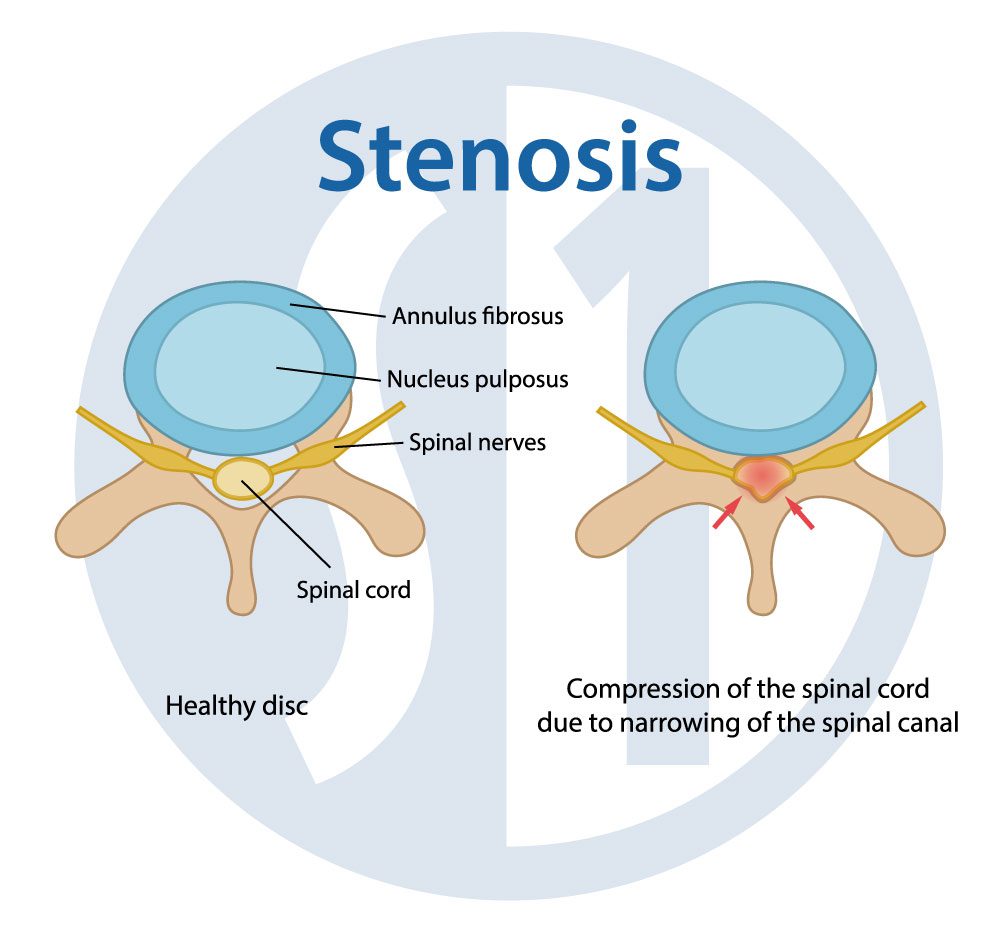Spinal Stenosis
Narrowing of the Spinal Passages Causing Nerve Compression
Spinal stenosis is a narrowing of the spine’s passageways. This narrowing causes the nerves to become decompressed, which can result in pain, tingling, weakness, loss of balance, and immobility. These symptoms can seriously diminish your quality of life. Causes include herniated disc(s), osteoarthritis, displaced or fractures in vertebrae, thickened spinal ligaments and overgrowth of bone (“spurs”). Stenosis begins most commonly with aging, but may be present at birth with congenital stenosis.
The diagnostic process will include questions about signs and symptoms, including whether you’ve experienced any pain, weakness, numbness or tingling in your arms, legs, hands, or feet. Other symptoms may include difficulty walking and poor balance, as the compression limits the nerve’s ability to carry signals to your arms and legs. Your doctor may order advanced diagnostic imaging to confirm the diagnosis before working with you to create a treatment plan.
After the diagnosis is confirmed your SpineOne doctor will recommend different treatment options that may include physical therapy or minimally invasive treatments. The symptoms of spinal stenosis can often be minimized or diminished, allowing you to resume normal activities after the treatment. Most SpineOne patients who complete their treatment plan report significant improvement in pain levels and in quality of life.
Schedule a Same Day Appointment
Spinal Stenosis Symptoms
Spinal Stenosis Treatment
Your spinal nerves travel through your spinal canal and exit through openings we call “foramen.” If any of these spaces are too narrow, your nerves become compressed. This is referred to as “spinal stenosis” which most often occurs in the neck and lower back.
